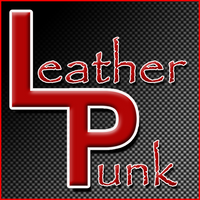Secondary Leather Tools, Continuing The Basics
As you advance in your new hobby, you'll need to equip your workbench with some extra tools and supplies. A look below will show you what a typical home leather workshop may include.
As you advance in your new hobby, you'll need to equip your workbench with some extra tools and supplies. A look below will show you what a typical home leather workshop may include.
Utility Knife
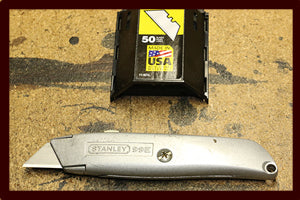
Really a primary tool, but since it’s a common household item and not specific to leather, I opted to list it here. Get one with a metal casing, not plastic. Start each session with a fresh blade, (or flip the blade). Be accustomed to the way leather cuts with a fresh razor blade only. (some people prefer buck knives to razors)
Granite Slab and Rubber Plates
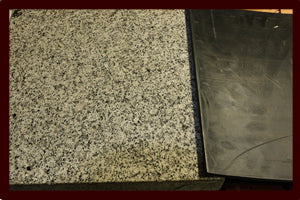
A thick granite slab provides a smooth, solid surface for hitting, striking and other tasks. The rubber plate is a versatile item that can absorb punches (to protect your tools) and offers the best cutting surface. In my video, I show you how I use rubber plates as a cutting surface .
Strap Cutter
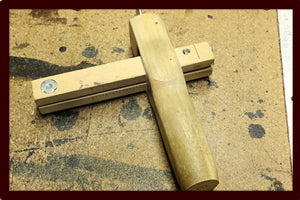
If you want to make belts, or precise straps that need to run a good length, a strap cutter is a must! Yes, you can simply use your utility knife (or buck knife), but a strap cutter makes this a very efficient and simple process.
Lighter or Heavier Mallets
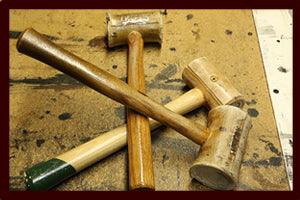
Rawhide mallets are weighted so you can match the right mallet for the task. If you’re trying to make really big holes, you may find heavier mallets work better (1lb or more). If doing embossing, that is, stamping patterns into the leather, a gentle tap is preferred, so you’ll want to use a lighter mallet for this.
Oblong and End Punches
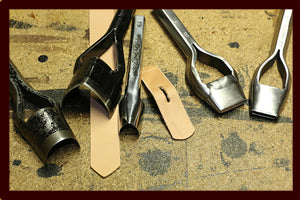
Oblong punches are used when you want to add buckles to your work. The End Punches give a professional look to the ends of straps. They come in different sizes and shapes, too.
Sewing Needle
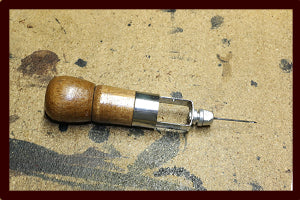
This nifty needle is ideal for beginners. They usually come with instructions on doing a simple lock stitch. Lots of people choose to use stitching as a reliable way to bond leather together, or just for decoration.
This only scratches the surface of the gadgets you can use, and I enjoy using most of them. Each tool has a learning curve, so be patient and keep practicing.
There’s more info and techniques in leather on my YouTube channel, please visit and subscribe. Hit the subscribe button below if you don't have time, also so I know this was helpful. Leather is a great hobby and, if you’re lucky, can turn into a profession. Glad I could help.

